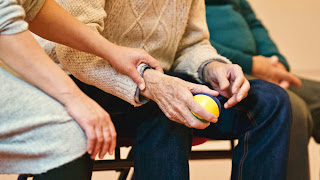A Show of Hands

During a recent conversation with a colleague regarding the treatment plan for a client with severe upper-limb weakness post-stroke, we happened to be interchangeably using terms like "hand dominance", "hand preference", and "handedness", and it felt quite jarring at the time. It kept bothering me all through the rest of the day and into the wee hours of the night. My feline companion, Clementine, seemed concerned as well. I decided to clear the air the next morning after several unsuccessful attempts to retire to bed and hopped onto our trusty generic search engines and scientific databases. I was quite shocked to see most studies used these terms synonymously, just like us! But I decided to dig deeper. Then lo and behold, I finally found what I was looking for! It just took most of an otherwise pleasant Sunday morning to find the answers to the most pressing question of my weekend. I'd have to disagree with Shakespeare on thi...

